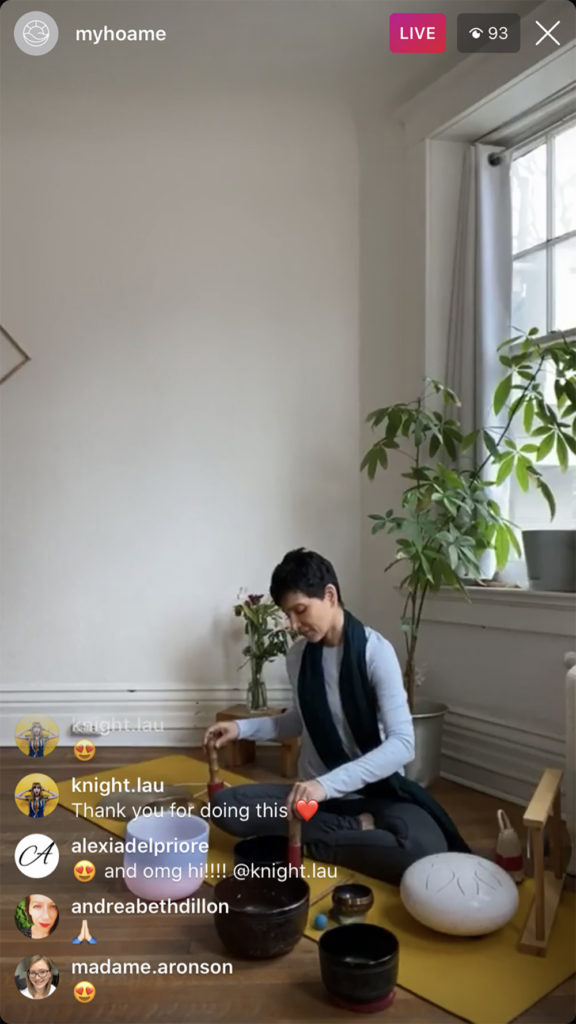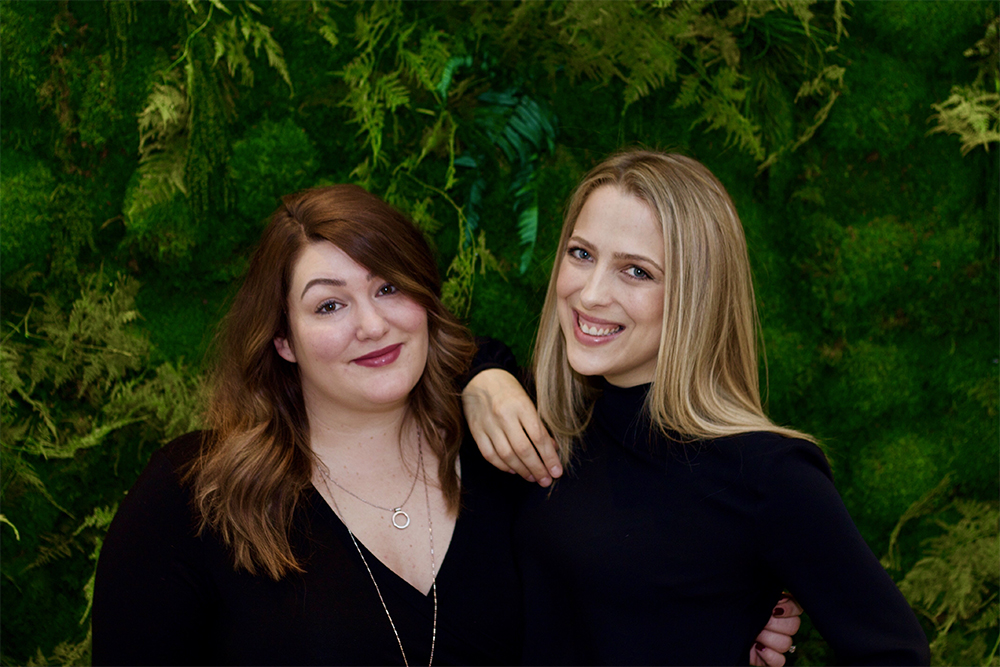As we navigate these uncertain times and adjust to social distancing measures, finding perspective and space from the jarring news cycle and state of the world could not be more important. Stephanie Kersta and Carolyn Plater, the founders of meditation studio Hoame, share the best ways to feel more connected and present to combat anxiety and stress.
With anxiety and stress at an all-time high, what are some easy steps people can take to feel more centred or get perspective?
BE PRESENT
“Meditation and mindfulness are excellent tools to help with anxiety and stress—we know deep breathing effectively works to decrease both relatively quickly. Grounding activities are helpful when feeling particularly overwhelmed—one we particularly like is the 5, 4,3, 2, 1: name 5 things you hear, 5 things you see, and 5 things you smell in the room you are in, follow up with 4 things you hear, see, smell, repeat for 3, 2, and 1. It essentially brings your focus to the present moment.”
FIND YOUR PURPOSE
“We would also encourage approaching this time by looking at what you can control and what you would like to accomplish in this time. By bringing some purpose into our days, we can counter the feelings of being out of control. Purpose is particularly helpful in the form of giving back: volunteering time, helping someone out, or donations.”
STAY CONNECTED
“Bring some purposeful connection into your days via phone calls, video chats, text check-ins—everyone is feeling they could use more connection, so reach out to those you don’t regularly talk to, or someone who you feel could use a friendly chat. We could all use some kindness at this time.”
For some who struggle with chronic anxiety, agoraphobia, hypochondria, and obsessive-compulsive disorder, the sudden obligation to clean, wash one’s hands and disinfect everything can be quite triggering. How can these individuals practice self-care whilst adjusting to the normal and staying safe?
“We would suggest setting boundaries with cleanliness. Start by outlining what is reasonable as per the current recommendations (like 20 second hand washing, etc.)—essentially following the guidelines but working at enforcing appropriate boundaries. Also, start by identifying when you want to perform a behaviour by asking yourself, is this a reasonable safety precaution OR is this an anxiety-driven thought? If it’s reasonable, then go ahead and do it (following the boundaries you set out). If it is anxiety-driven, then go to coping strategies and use an alternative strategy. Set up a really great self-care regimen and coping strategies list that is not focused around cleanliness—make a list for yourself of really good calming, soothing things. When you are anxious, you have these resources readily available.”
Given the news cycle and the current state of affairs, unplugging and meditating might prove challenging. What are some tips on effectively meditating if you’re out of practice or starting out?
“Start with a really small goal. Try meditation for 3 minutes per day and once that gets easier, you can extend the amount of time you spend meditating. Many people find guided meditations easier, so trying a guided class is helpful (Hoame is offering free classes 3 times a day on Instagram). Also, incorporating mindfulness into your day is often a way to bring some calm into your daily tasks. Perhaps drink your morning coffee or tea mindfully—just focus on the drink: the temperature, colour, smell, taste, the warmth of the mug in your hands, etc. You can apply this mindfulness into any task you do such as washing dishes or walking. This allows us to bring our focus into the present moment, thus bringing some calm into your day.”

Is there an ideal time of day, spot, and position to meditate?
“There isn’t! Wherever you feel most comfortable and the time of day that works for you best is ideal. Some people prefer a morning meditation to energize and focus for the day ahead, some prefer sleep or restorative meditations to help soothe them to sleep, and some like a mid-day pick up around the lunch hour. We would encourage you to find a time of day that works best for you and stick to that. In terms of spot and position, however you are most comfortable without falling asleep. While sleep is often a (needed) byproduct of some meditations, it isn’t the overall goal—so if you find yourself falling asleep while laying down, perhaps a seated meditation is best for you. Try out various spots in your home to see where you are most comfortable. In terms of props, you can use as much or as little as you like. Really all you need to meditate is you, but if you want to add to your set-up, meditation cushions, essential oils, crystals, and sage or palo santo (always ethically sourced and used respectfully) are great add ons.”
What are some mantras and affirmations that people can incorporate into their daily routine to sooth their soul?
“Anything that you put after ‘I am’ is especially powerful, so try ‘I am safe’, ‘I am calm’, ‘I am grateful’. Also listing what you are grateful for is helpful to keep our focus on what we do have rather than focusing on what is currently missing or being taken away from us during this difficult time.”
How can people connect with Hoame while social distancing and staying safe? What kind of classes is the studio offering?
“You can follow us @myhoame on Instagram. We are offering free meditations 3 times a day, as well as essentials to meditation series, and some in depth IG Live talks with thought leaders in energy healing, meditation, Naturopathic Doctors, as well as therapeutic tips from both of us.”


